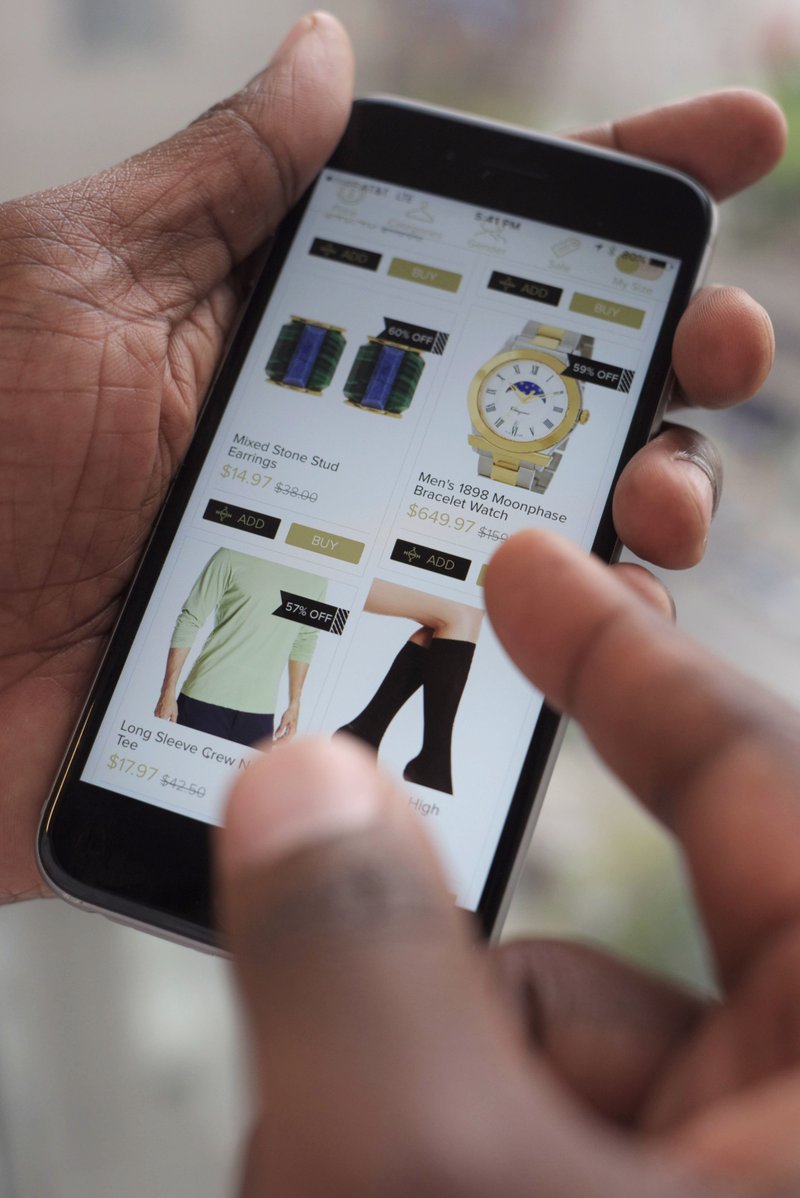NEW YORK -- Shoppers who got addicted to sales during the last recession have more tools than ever to cross-check prices and find bargains, creating a race to the bottom -- particularly on clothes.
While retailers are trying to offer more exclusive products and improve the in-store shopping experience, online leader Amazon is expanding quickly into apparel, creating more discounting wars. Off-price stores and new discount chains keep the pressure on.
"There is not a lot that I would pay full price for," said Sara Scoggins, a 30-year-old Los Angeles resident who uses apps like Hafta Have for scanning items and tracking deals and Honey for coupons and promo codes. "There is always a deal. You are a sucker not to get a deal."
The bargain-hunting started in earnest during the recession, when stores plied shoppers with discounts to rid themselves of mounds of merchandise after consumer spending tanked. But even as the economy has perked up, Americans haven't let go of the search for deals.
"We've conditioned consumers especially coming out of the recession for promotions and discounting," said Jack Kleinhenz, chief economist at the National Retail Federation trade group.
Shoppers have time and technology on their side. An ever-growing number of apps, websites and browser extensions will search for shipping deals, sales and coupons. And for some shoppers, there's a thrill in outwitting the stores.
Marc Phillips, 26, who works in digital strategies and lives in Manhattan, says he mostly buys clothes at the end of the season and shops at outlets like Nordstrom Rack.
"I have found some nice deals, like nice designer names," he said. "I consider myself brand-savvy and price-savvy. I understand the types of tricks that stores play."
Department store and mall-based clothing retailers have wrestled with the biggest challenges. Even luxury names Michael Kors and Ralph Lauren have struggled to get shoppers to buy without discounts. And experts expect the discounting to increase as Amazon becomes more aggressive in clothing sales.
Amazon has made a big push to expand its offerings under private labels such as Lark & Ro designed to be as stylish as recognizable national brands. So shoppers looking for a skirt or pants are automatically shown that brand compared to a well-known label.
A Lark & Ro skirt could be 50 percent below a similar item from a national brand, said Michelle Ai, manager of marketing at Boomerang Commerce, a startup that helps retailers use data to make price adjustments.
Amazon is poised to surpass Macy's this year as the largest U.S. clothing seller, according to Cowen & Co. analysts. They forecast that Amazon's share of the U.S. clothing market will increase from 6.6 percent last year to 16.2 percent by 2021 as it gains more Prime members and increases its clothing selection.
And in the meantime, U.S. retailers are facing new competition from low-price international rivals, including Britain's Primark chain that has started opening stores along the East Coast. It offers jeans as low as $7 and tops for $4.
This all means retailers actually have less ability to raise prices now than during the recession, said Michael Niemira, chief economist at The Retail Economist LLC, based on an analysis of government data.
Lyst, an online fashion platform, said 30 percent of orders on the site last year included a discount, up from 23 percent in 2014.
And First Insight, which helps retailers price new items, says its tests have found about 8 percent of products over the past three quarters could sell for full price or higher. That's down from the 11 percent average over the last several years.
Even that drop "has a significant impact to the industry," says Greg Petro, president and chief executive officer of First Insight.
Business on 06/10/2017

